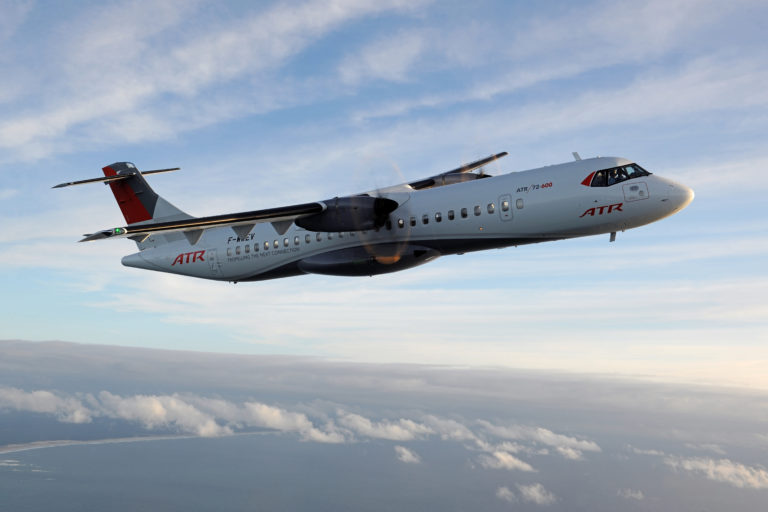The Future Has Always Been ATR!
This year celebrating our 40th anniversary, we at ATR pride ourselves on the sustainability, fuel efficiency and innovation of our aircraft: concerns often thought exclusive to the modern era. But thanks to the forward thinking and sheer daring of our founders, they have been a driving force right from the outset. #40YearsOfMakingADifference

State of the art from the start

The origins of our company are to be found in the late 1970s, when there was a growing demand for flexible and economic regional air connectivity that jets couldn’t meet. Thinking outside the box and completely independently of each other, France’s Aérospatiale and Italy’s Aeritalia each launched the design phase of a state-of-the-art turboprop aircraft.
In a wonderful example of cross-border cooperation, Aérospatiale and Aeritalia realised they had a common ambition and put their heads together to create a single company: ATR, for Avions de transport regional or Aerei da trasporto regionale (‘regional transport aircraft’ in French and Italian respectively). Their first brainchild was the ATR 42-300, a 42-seater that combined the most innovative aspects of its founding companies’ designs – aspects that are still a hallmark of ATRs and some of the keys to their success!
High wings and sawmills
To start with, the 42-300’s high wings enabled the engines and propellers to be placed high off the ground. This made it possible to increase the diameter of the propellers and consequently propeller efficiency, while limiting the impact of debris projected from untarmacked runways and facilitating freight loading.
Its T-tail ensured the aerodynamic efficiency of the Horizontal Tail Plane, while the low undercarriage was designed both for robustness and airframe efficiency and because it enabled the aircraft, with its high wings and short wheel track, to take off and land on very narrow runways.
Another feature that was totally groundbreaking for regional aircraft at that time was that state-of-the-art composites were used in the wings as well as in the Horizontal and Vertical Tail Planes, in order to reduce weight and fuel. As a result, the 42-300’s fuel consumption was nearly half that of its 40-50 seat competitors!
And last but not least was the positively inspired choice of engine. Pratt & Whitney’s PW100 had proved its worth, not on aircraft but in the huge sawmills of Canada’s frozen North! Fitted with propellers and adapted specifically for the 42-300, the company’s new PW120 could reach speeds of up to 550 km/h (300 nm/h) and boasted sustainability and reliability levels second to none. (Since those early days, this close collaboration between ATR and Pratt & Whitney has gone from strength to strength, culminating in the recent launch of the PW127XT-M engine, purpose-built for both the ATR 42 and the ATR 72.)

ATR takes off!

It took less than three years for the very first prototype of the 42-300 to conduct its maiden flight in Toulouse, piloted by a living icon Gilbert Defer: one of the former test pilots for Concorde. Taking off from the main runway at Toulouse-Blagnac airport on 16th August 1984, the flight lasted two hours and 32 minutes, reached an altitude of 6,000 m (19,600 ft) and speeds of 270 nm/h (500 km/h). Aircraft type certification was awarded in September 1985 and our first production aircraft was delivered to French launch customer Air Littoral by the end of the year.

Pioneering to the core
Created by pioneers, innovation is at the core of ATR’s essence. Now, as then, our teams are constantly striving to push the boundaries of regional air transport. Watch for our next 40th-anniversary special to find out how ATR’s spirit of innovation has led to many groundbreaking innovations over the years.


















